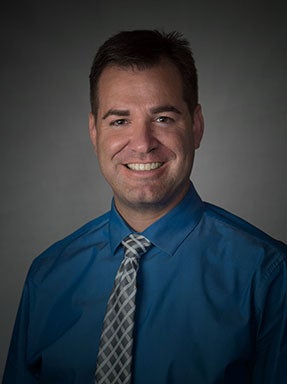Current Students
Media Relations Manager

Jon.Stone@du.edu
303 871-2781
As the city of Denver continues to evolve and grow, new construction further buries our past. However, before DU IMPACT 2025 transforms the University of Denver campus, a group of students had the opportunity to unearth some history.
“The main thing that we are doing is teaching these students how to do archaeology,” said Bonnie Clark, an associate professor in the Department of Anthropology. “Archaeology isn’t dinosaurs and it doesn’t have to be King Tut. It can be your own past of your own town.”
Earlier this month, Clark and Professor Larry Conyers led a team of anthropology graduate and undergraduate students on an archaeological dig of a site located directly west of Sturm Hall. The parking lot will soon become a new residence hall for first-year students. It’s the first phase of The Denver Advantage Campus Framework Plan, a long-term vision for how DU will transform the student experience over the years and decades ahead.
“We are doing history in a way that is not written down in the history books,” Conyers said. “We are doing history by looking at the material records of people’s lives. These are the things they don’t write in their diaries and these are the things that are not published in the paper.”
Before the University purchased the land and turned it into a parking lot, it used to be covered by single-family homes. Using old pictures, maps and tax records, the team was able to determine what the neighborhood looked like in the early 1900s. Then, using ground-penetrating radar (GPR), they determined exactly where the homes once stood and where the best locations would be to dig.
“We created three-dimensional images, like a cat scan of someone’s body, but in this case, we did a CT scan of the ground,” Conyers said. “We can tell how deep objects are and where they sit in space within the whole parking lot.”
The team settled on two different dig sites; the cellar of the home that once stood at 2019 S. Race St. and the garage of the home that was once located at 2003 S. Race St.


















Audrey Isberg was only two years old when her family moved into the home at 2003 S. Race St. Now, more than 90 years later, she clearly remembers what the area once looked like.
“I thought it would be kind of fun to see what they are finding because I didn’t imagine they would find very much,” Isberg said as she watched the students dig up her old garage.
After four days of digging students found tiles, nails, bricks and even old seeds from a garden. However, in the end, it was not about what they found.
“This is the best way to get a feel for what it’s actually like to be an archaeologist; you don’t get it from reading reports or talking about it,” said Courtney Seffense, a third-year student majoring in anthropology and chemistry. “This is a completely different experience from the classroom.”
We accept the Common App, a universal application that can be sent to many schools.
Go to the graduate admission application to submit your information. For information on admission requirements, visit the graduate academic programs page and locate your program of interest.
Go to the graduate admission application to submit your information. For information on admission requirements, visit the graduate academic programs page and locate your program of interest.
We accept the Common App, a universal application that can be sent to many schools.